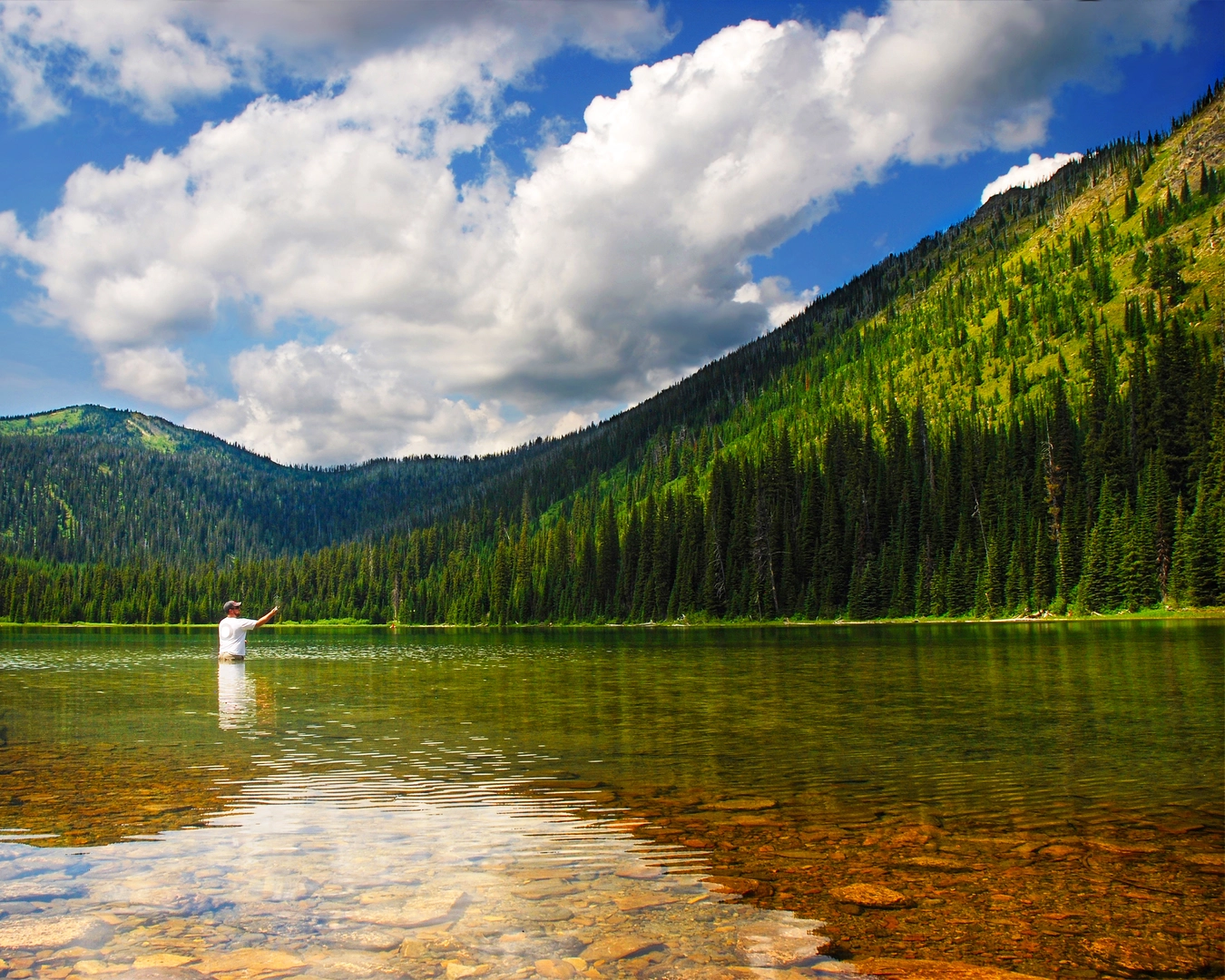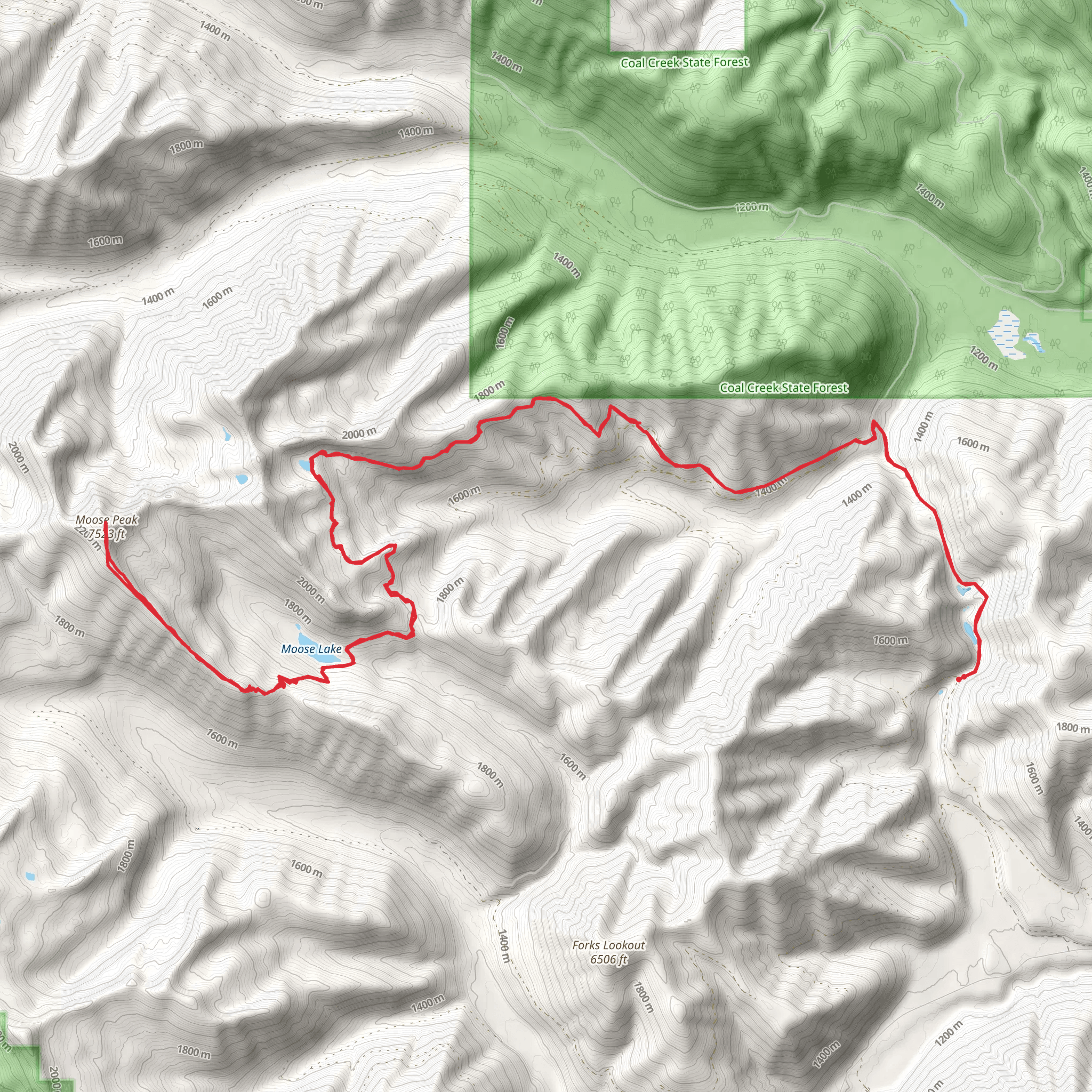Download
Preview
Add to list
More
42.9 km
~3 days
2198 m
Multi-Day
“Embark on the Moose Lake trail, a challenging yet awe-inspiring Montana adventure through majestic landscapes and rich history.”
Moose Lake trail, nestled in the scenic region near Flathead County, Montana, offers an adventurous loop that spans approximately 43 kilometers (around 26.7 miles) with an elevation gain of roughly 2100 meters (about 6890 feet). This trail is not for the faint of heart, as it's considered difficult due to its steep inclines and rugged terrain.
Getting to the Trailhead
To reach the starting point of the Moose Lake trail, hikers can drive to the vicinity of Flathead County. The nearest significant landmark is the Glacier National Park, a treasure trove of natural beauty and a beacon for outdoor enthusiasts. For those relying on public transportation, options may be limited, and it's advisable to check local transit schedules for any available routes to the park's vicinity. From there, hikers may need to arrange for a taxi or shuttle service to the trailhead.
Navigating the Trail
Once at the trailhead, hikers should ensure they have the HiiKER app downloaded for navigation, as it will be an invaluable tool for staying on track. The trail begins with a gradual ascent through dense forests, where the air is filled with the scent of pine and the sound of rustling leaves. As you progress, the incline becomes more pronounced, and the path may challenge your endurance.
Landmarks and Scenery
At approximately 10 kilometers (6.2 miles) in, you'll encounter the first of several breathtaking vistas overlooking the valley below. The trail continues to weave through alpine meadows dotted with wildflowers during the warmer months. Keep an eye out for Moose Lake itself, a serene body of water that mirrors the sky and surrounding peaks, providing a perfect spot for a rest and a photo opportunity.
Wildlife and Nature
The area is rich with wildlife, and while sightings are a thrilling part of the experience, it's important to maintain a safe distance and practice bear safety. You may spot moose, deer, and various bird species, including eagles soaring above. The trail also passes through areas that are home to grizzly bears, so carrying bear spray and knowing how to use it is essential.
Historical Significance
The region around Moose Lake is steeped in history, with Glacier National Park being a testament to the conservation efforts that began in the early 20th century. The park and its trails, including Moose Lake, are located on the traditional lands of several Native American tribes, and hikers are encouraged to respect this heritage by leaving no trace and preserving the natural environment.
Preparation and Planning
Given the trail's difficulty, hikers should be well-prepared with adequate supplies, including water, food, and layers to accommodate changing weather conditions. It's also wise to inform someone of your hiking plans and expected return time. The best times to hike are late spring through early fall, as the trail can be covered in snow during the winter months, making it even more challenging and potentially hazardous.
Remember, the Moose Lake trail offers a rewarding experience for those who are well-prepared and respectful of the natural and historical significance of the area. Enjoy the journey, and let the rugged beauty of Montana inspire your adventurous spirit.
What to expect?
Activity types
Comments and Reviews
User comments, reviews and discussions about the Moose Lake, Montana.
4.63
average rating out of 5
8 rating(s)

